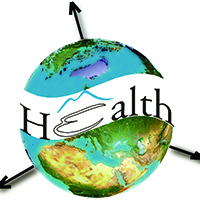Spatial association between the incidence rate of COVID-19 and poverty in the São Paulo municipality, Brazil

Accepted: 10 September 2020
Appendix: 82
HTML: 21
All claims expressed in this article are solely those of the authors and do not necessarily represent those of their affiliated organizations, or those of the publisher, the editors and the reviewers. Any product that may be evaluated in this article or claim that may be made by its manufacturer is not guaranteed or endorsed by the publisher.
Authors
In this article, we investigated the spatial dependence of the incidence rate by COVID-19 in the São Paulo municipality, Brazil, including the association between the spatially smoothed incidence rate (INC_EBS) and the social determinants of poverty, the average Salary (SAL), the percentage of households located in slums (SLUMS) and the percentage of the population above 60 years of age (POP>60Y). We used data on the number notified cases accumulated per district by May 18, 2020. The spatial dependence of the spatially smoothed incidence rate was investigated through the analysis of univariate local spatial autocorrelation using Moran's I. To evaluate the spatial association between the INC_EBS and the determinants SAL, POP>60Y and SLUMS, we used the local bivariate Moran's I. The results showed that the spatially smoothed incidence rate for COVID-19 presented significant spatial autocorrelation (I = 0.333; P<0.05), indicating that the cases were concentrated in clusters of neighbouring districts. The INC_EBS showed a negative spatial association with SAL (I = -0.253, P<0.05) and POP>60Y (I = -0.398, P<0.05). We also found that the INC_EBS showed a positive spatial association with households located in the slums (I = 0.237, P<0.05). Our study concluded that the households where the population most vulnerable to COVID-19 resides were spatially distributed in the districts with lower salaries, higher percentages of slums and lower percentages of the population above 60 years of age.
How to Cite

This work is licensed under a Creative Commons Attribution-NonCommercial 4.0 International License.
PAGEPress has chosen to apply the Creative Commons Attribution NonCommercial 4.0 International License (CC BY-NC 4.0) to all manuscripts to be published.
-
Albina Mościcka, Andrzej Araszkiewicz, Jakub Wabiński, Marta Kuźma, Damian KiliszekJournal of Clinical Medicine : 2021
-
Nushrat Nazia, Jane Law, Zahid Ahmad ButtSpatial and Spatio-temporal Epidemiology : 2022
-
Andi Alfian Zainuddin, Amran Rahim, Muh. Firdaus Kasim, Sri Ramadany Karim, Rina Masadah, Syahrul RaufOpen Access Macedonian Journal of Medical Sciences : 2022
-
Neşe ARAL, Hasan BAKIRDicle Üniversitesi İktisadi ve İdari Bilimler Fakültesi Dergisi : 2023
-
Choirul Amin, Afif Ari Wibowo, Danardono, Nicken Ayu Andhika Mayangsari, Chintania Azahra Tantri NoermartantoIOP Conference Series: Earth and Environmental Science : 2024
-
Marek Wyszyński, Michał Grudziński, Krzysztof Pokonieczny, Marek KaszubowskiApplied Sciences : 2022
-
Nushrat Nazia, Zahid Ahmad Butt, Melanie Lyn Bedard, Wang-Choi Tang, Hibah Sehar, Jane LawInternational Journal of Environmental Research and Public Health : 2022
-
Mário Círio Nogueira, Isabel Cristina Gonçalves Leite, Maria Teresa Bustamante Teixeira, Marcel de Toledo Vieira, Fernando Antonio Basile ColugnatiRevista da Sociedade Brasileira de Medicina Tropical : 2022
-
Choirul Amin, Dewi Novita Sari, Kuswaji Dwi Priyono, Bela HidayahAdvances in Social Science, Education and Humanities Research : 2023
-
Olga De Cos, Valentín Castillo-Salcines, David Cantarero-PrietoGeospatial Health : 2022

 https://doi.org/10.4081/gh.2020.921
https://doi.org/10.4081/gh.2020.921






